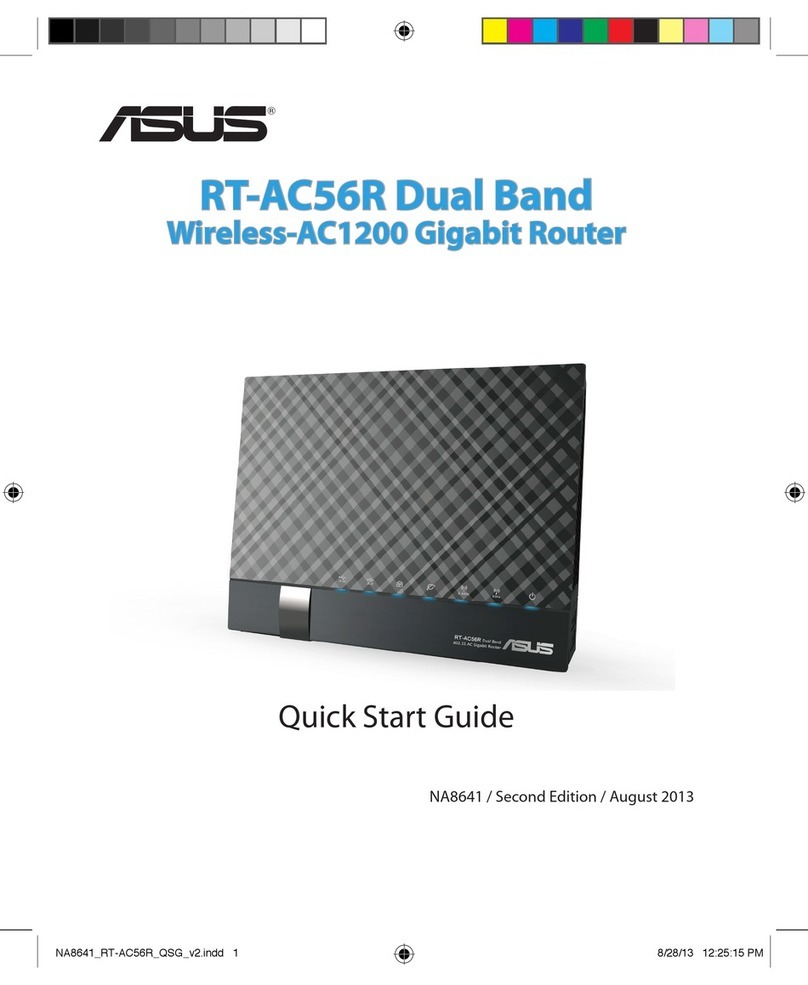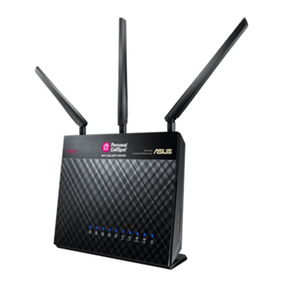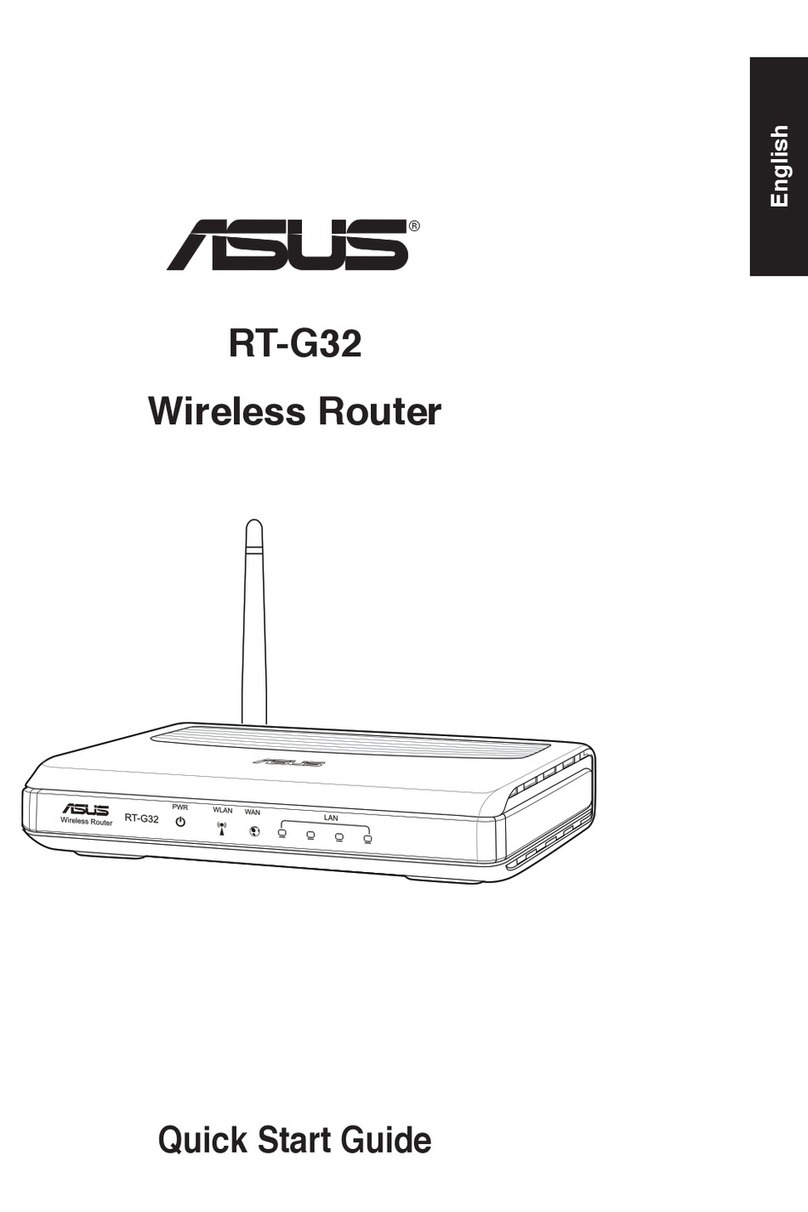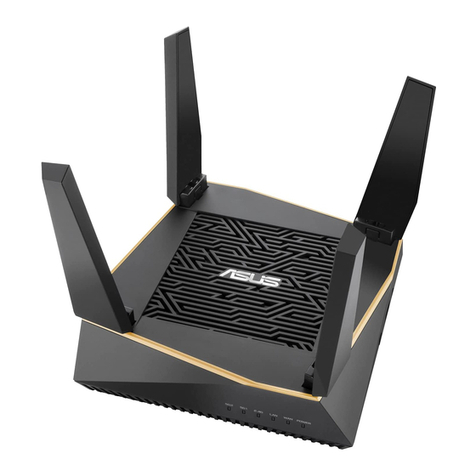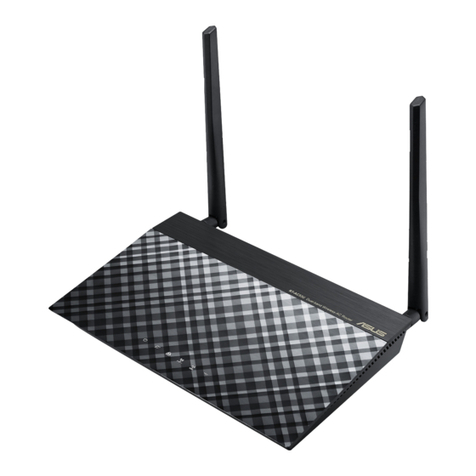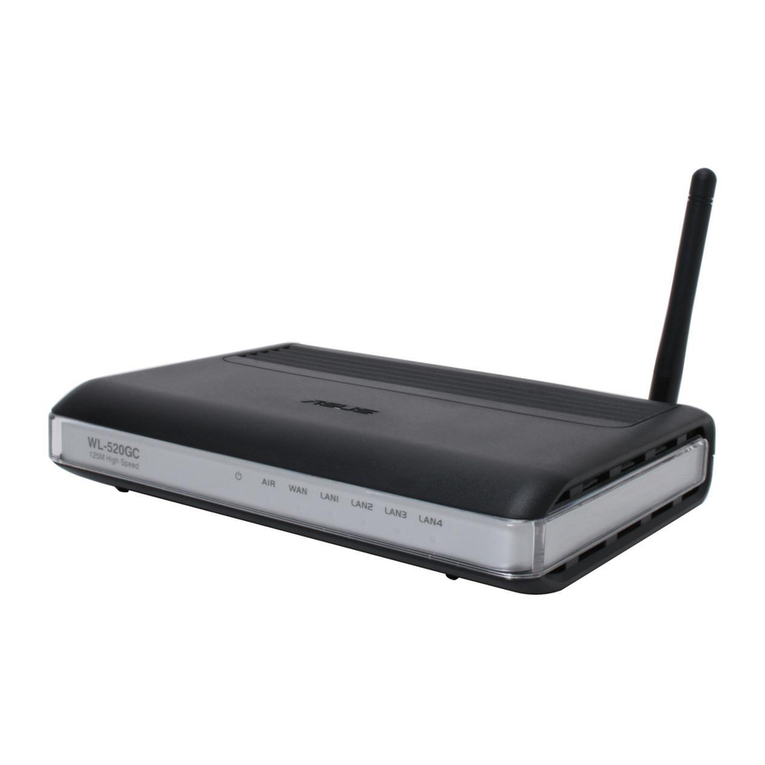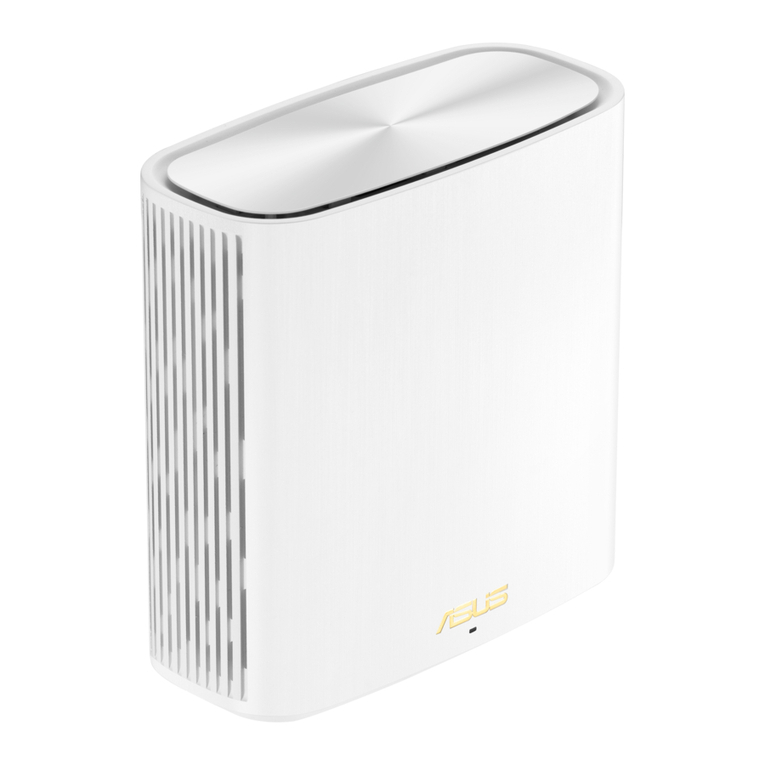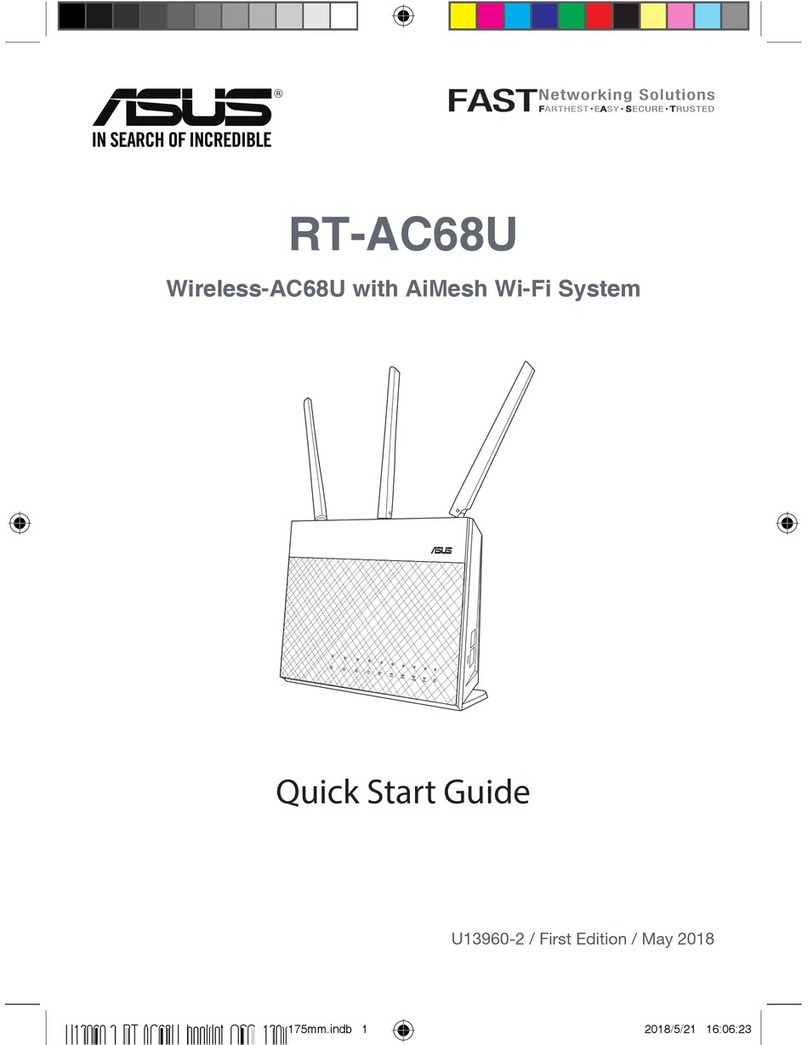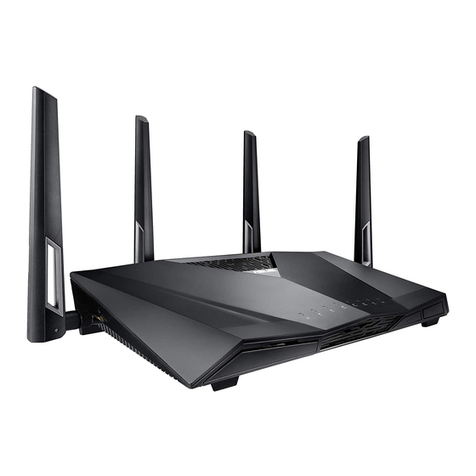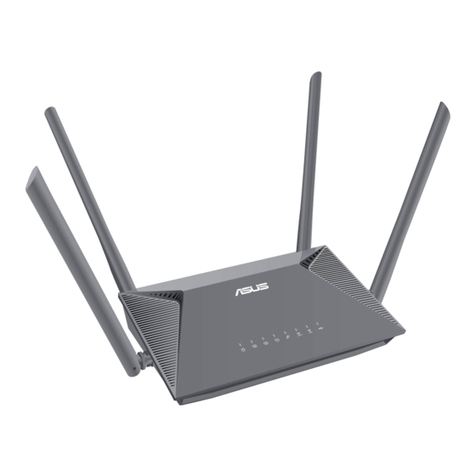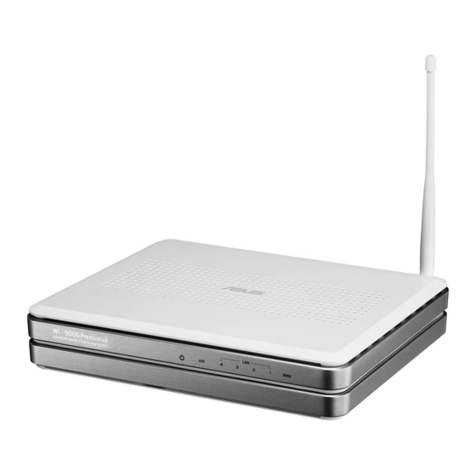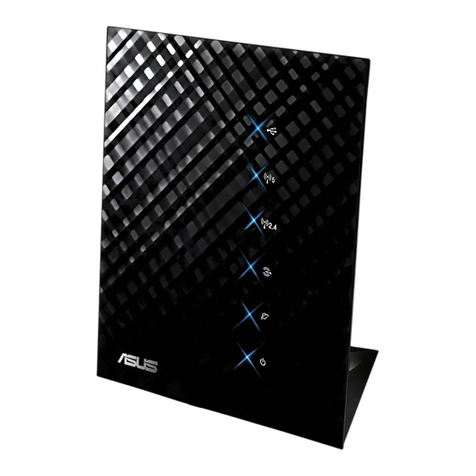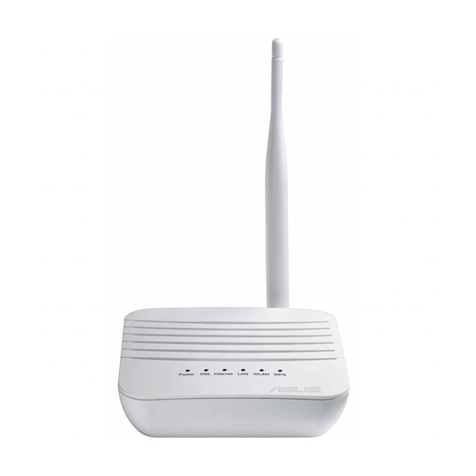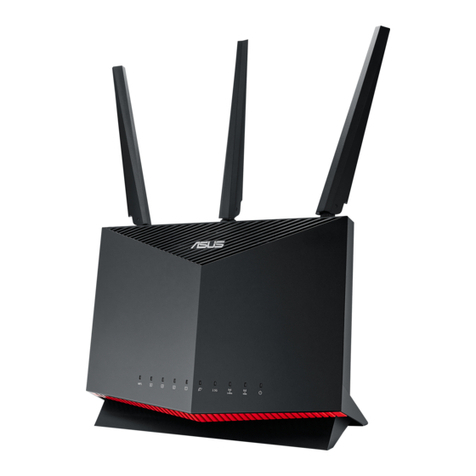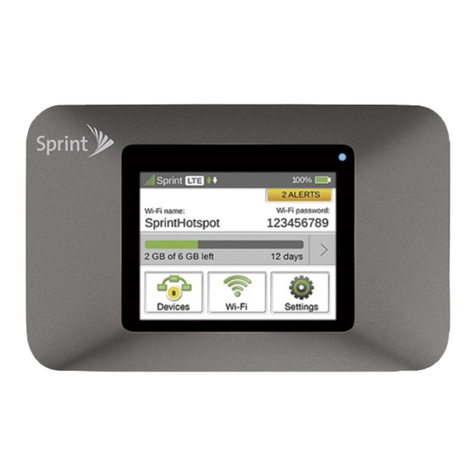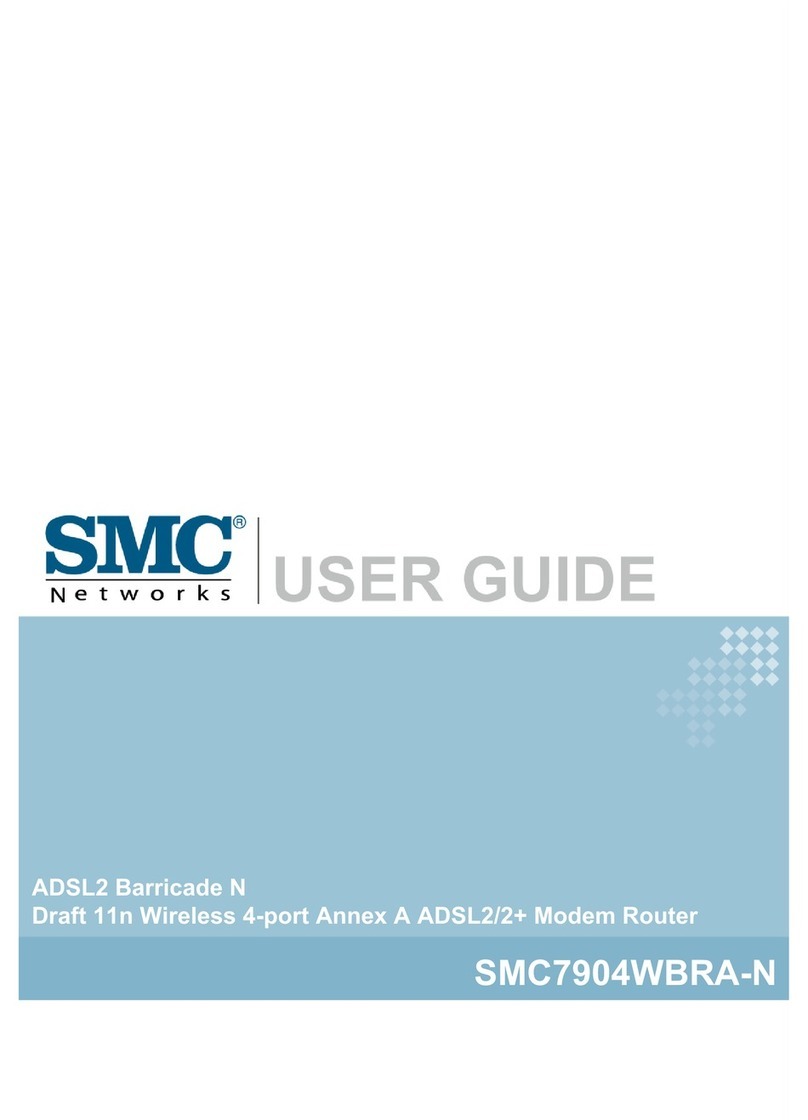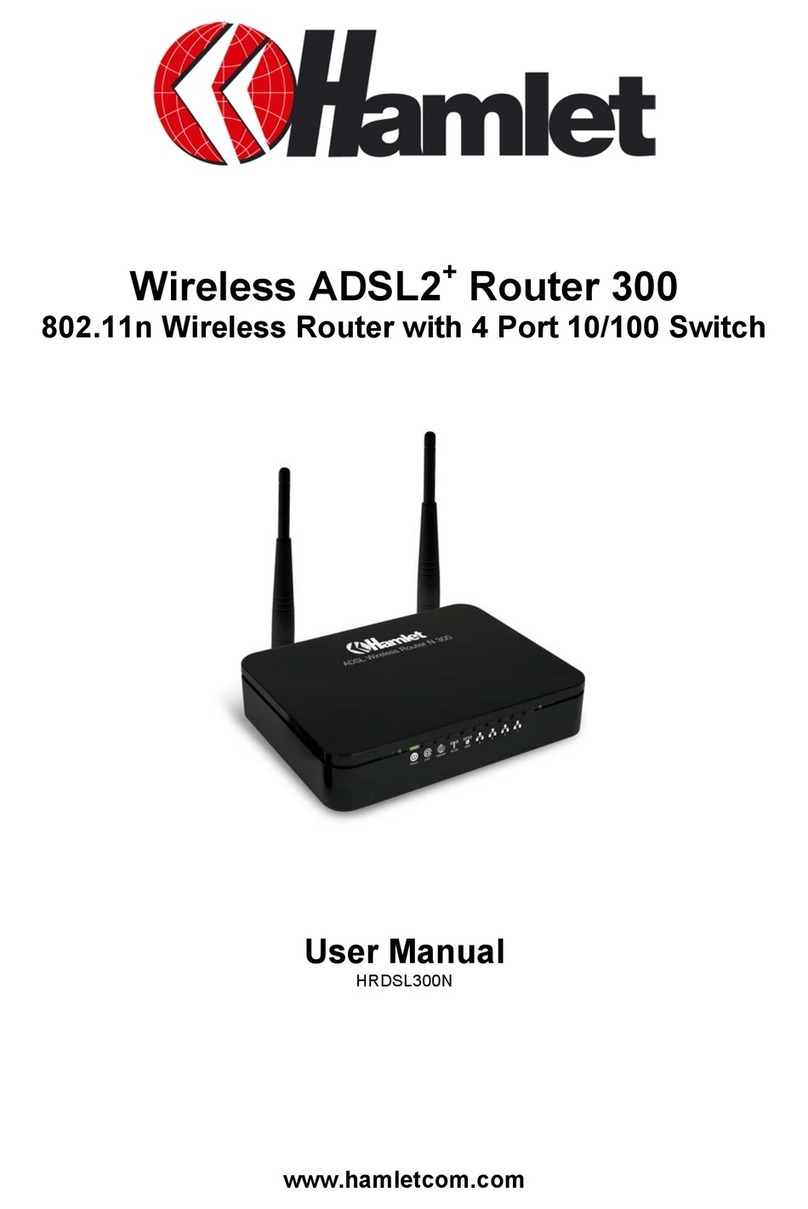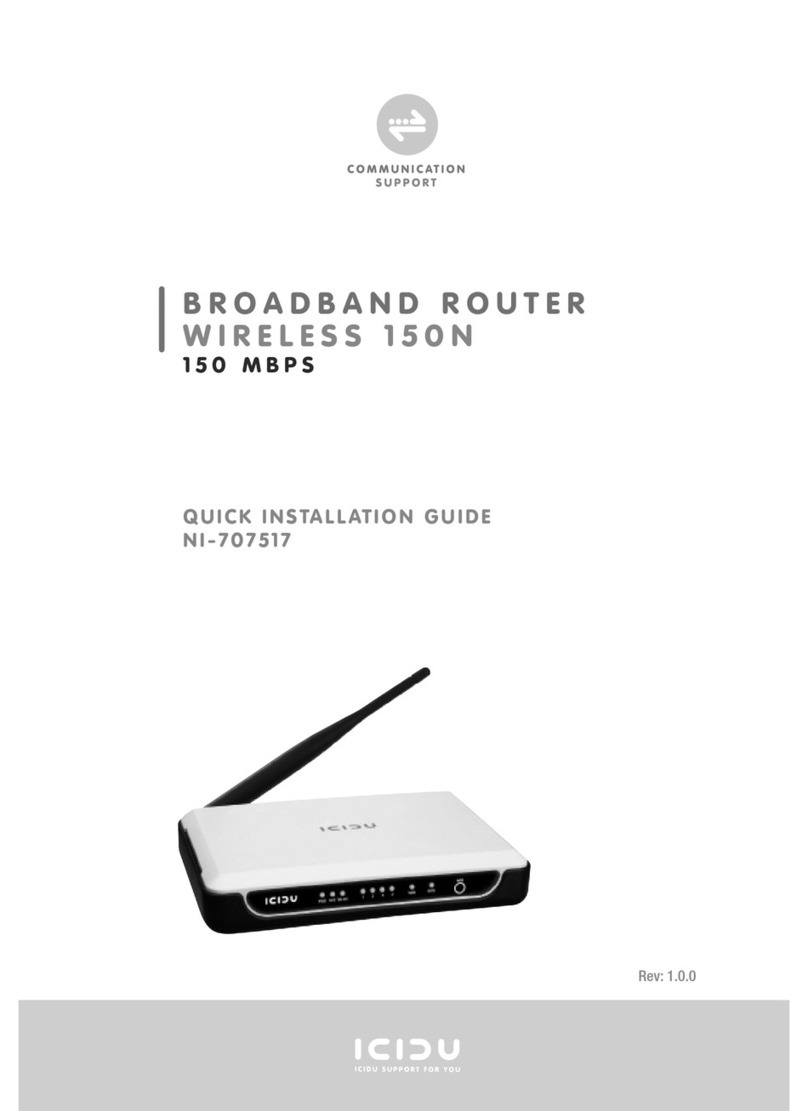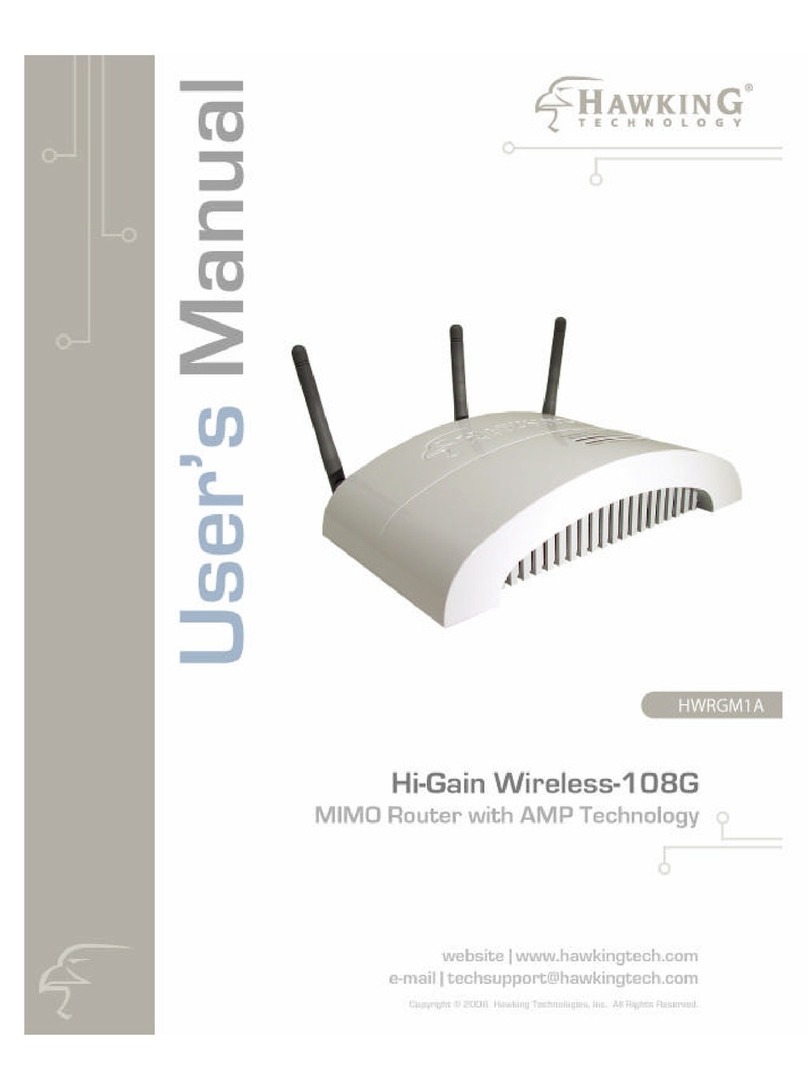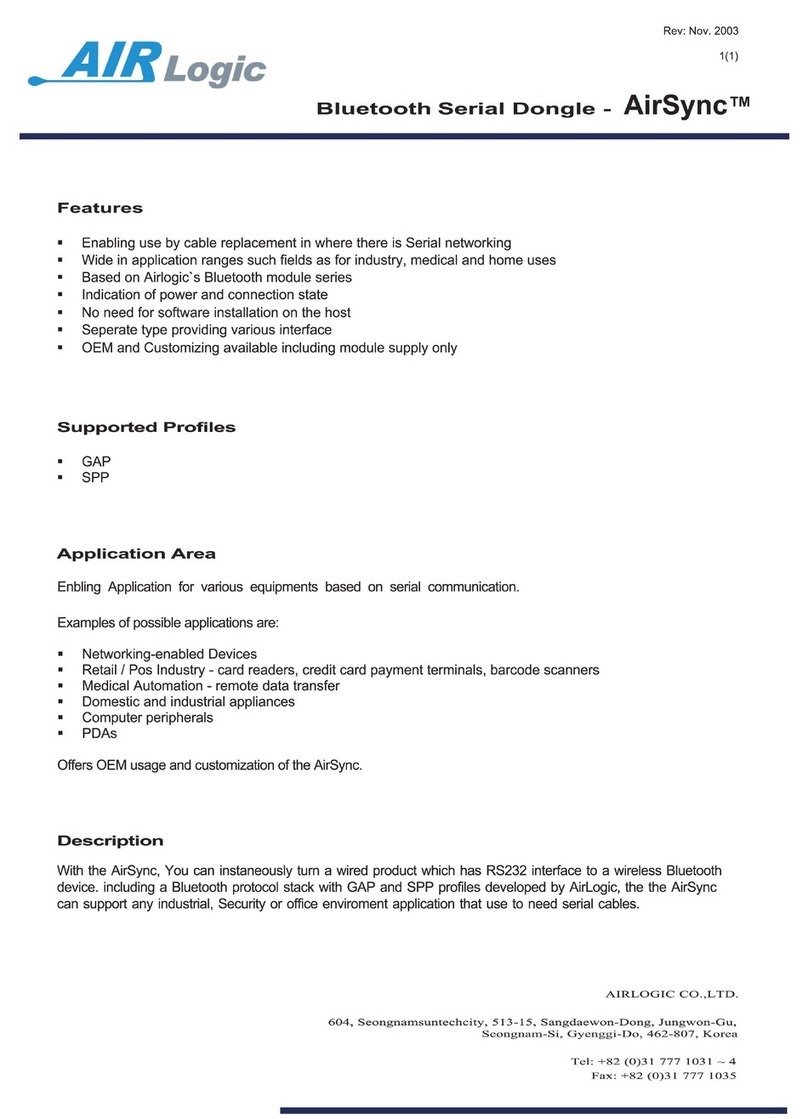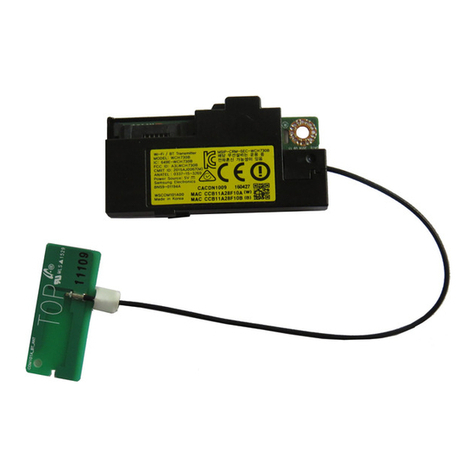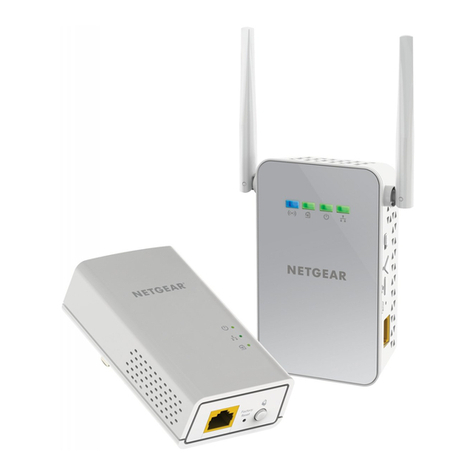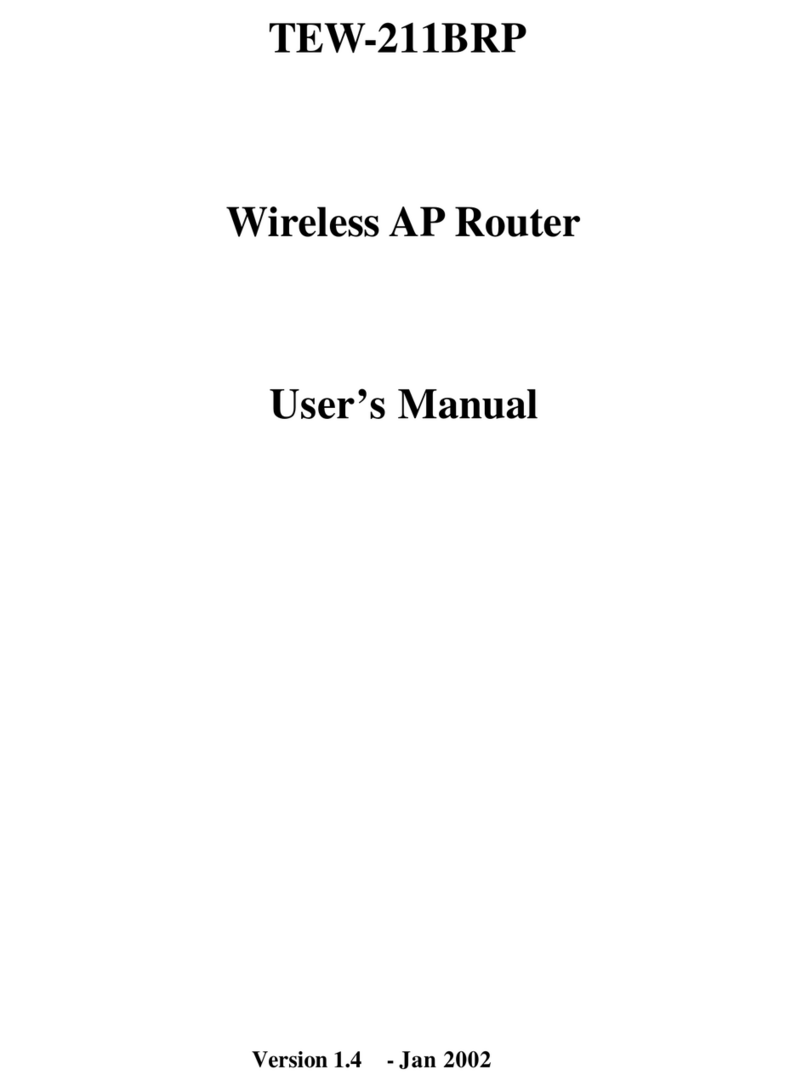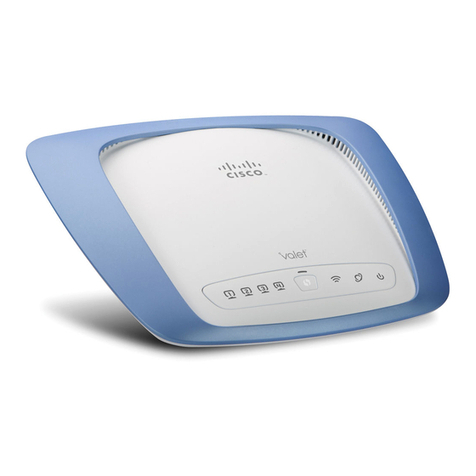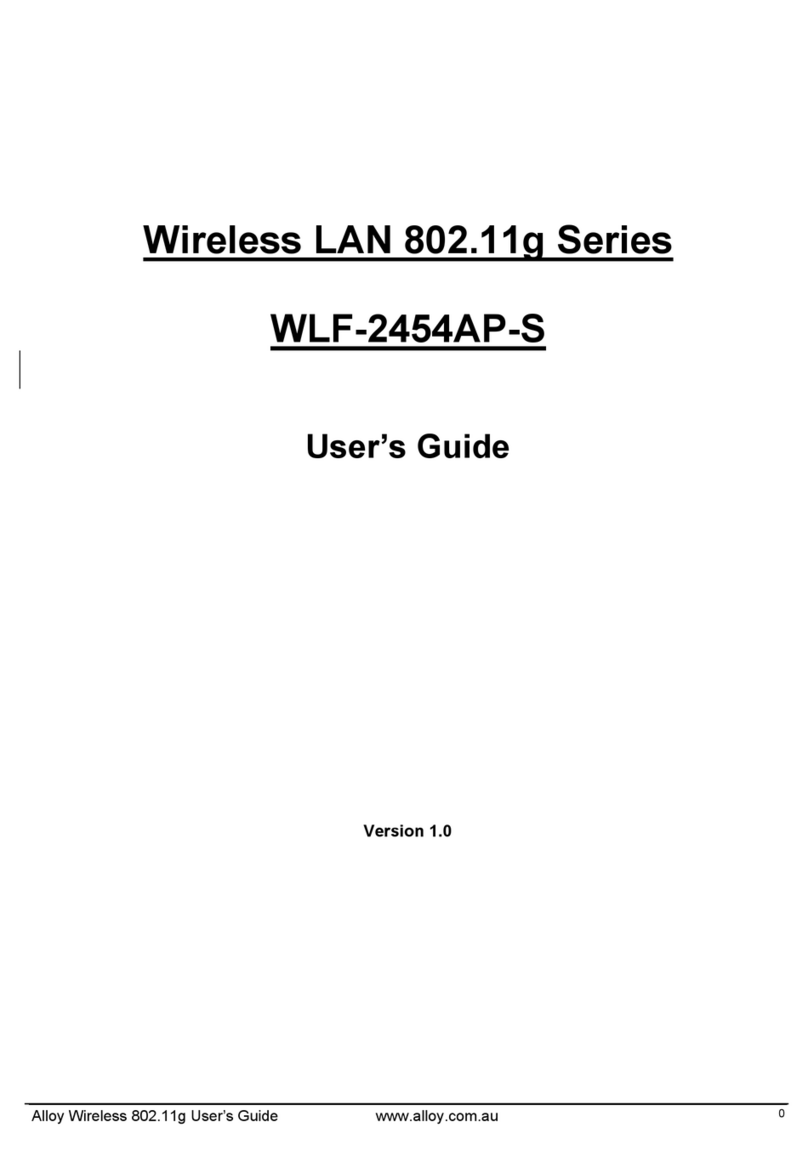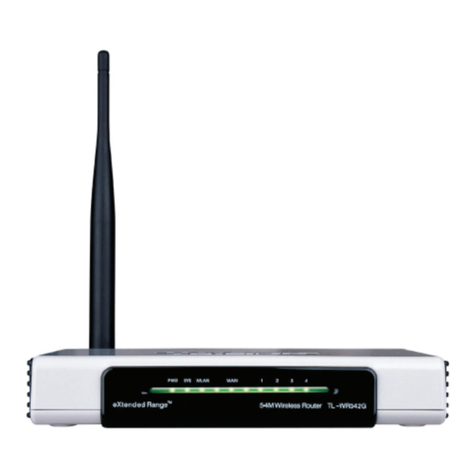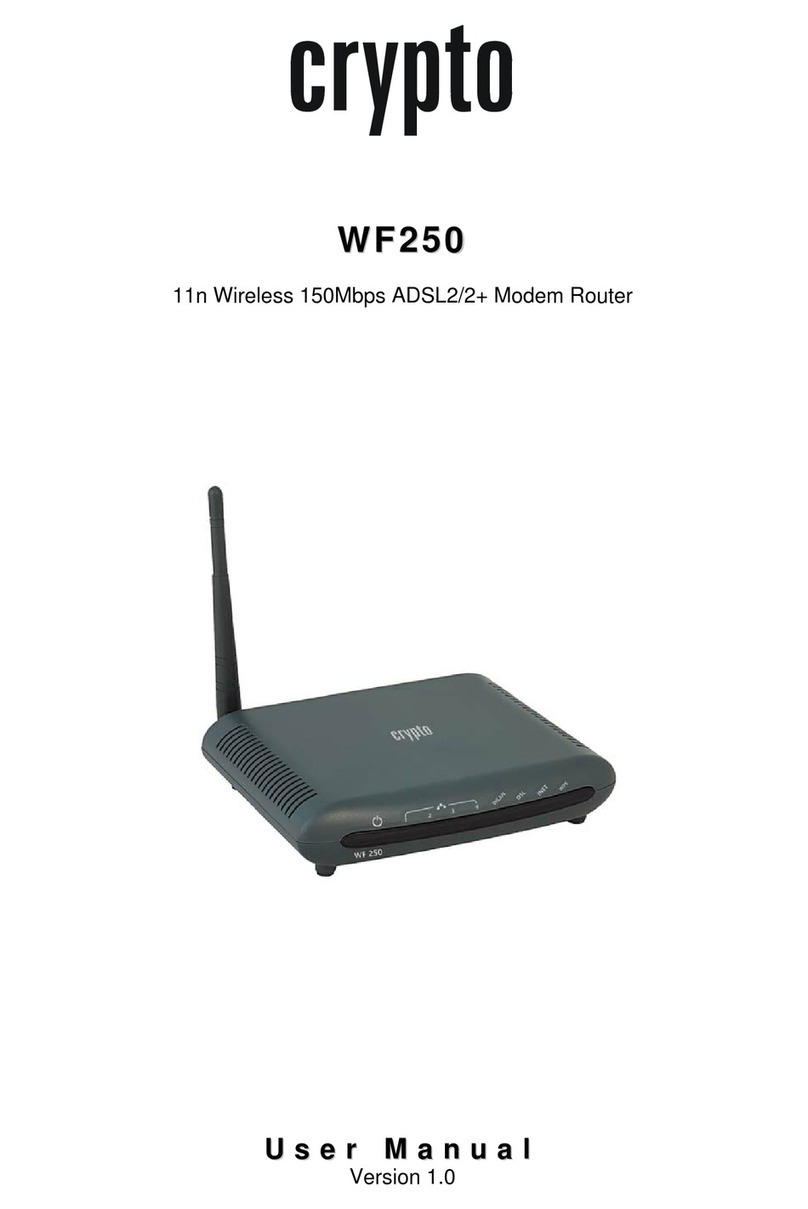RT-N15 Wireless Router User Manual
4
The ASUS RT-N15 Wireless Router can meet various working scenarios with proper conguration.
The default settings of the wireless router may need change so as to meet your individual needs.
Therefore, before using the ASUS Wireless Router, check the basic settings to make sure they all
work in your environment.
ASUS provides a utility named WPS for fast wireless conguration. If you would like to use
EZSetup for your wireless network conguration, refer to chapter 5 for details.
Note: Wired connection for initial conguration is recommended to avoid possible
setup problems due to wireless uncertainty.
1) Wired connection
The RT-N15 Wireless Router is supplied with an Ethernet cable in the package. The wireless
router has an integrated auto-crossover function. Thus, you can either use straight-through or
crossover cable for wired connection. Plug one end of the cable to the LAN port on the rear
panel of the router and the other end to the Ethernet port on your PC.
2) Wireless Connection
For establishing wireless connection, you need an IEEE 802.11b/g/n compatible WLAN card.
Refer to your wireless adapter user manual for wireless connection procedures. By default,
the SSID of ASUS Wireless Router is “default” (in lower case), encryption is disabled and
open system authentication is used.
3) Setting IP address for wired or wireless client
To access the RT-N15 Wireless Router, you must have correct TCP/IP settings on your wired or
wireless clients. Set the IP addresses of the clients within the same subnet of RT-N15.
Getting an IP address automatically
The RT-N15 Wireless Router integrates DHCP server functions, thus, your PC gets an IP
address automatically.
Note: Before rebooting your PC, switch ON the
wireless router and make sure the router is in ready
state.
Setting up the IP address manually
To manually set the IP address, you need to know the
default settings of the wireless router:
• IP address 192.168.1.1
• Subnet Mask 255.255.255.0
3. Getting started
